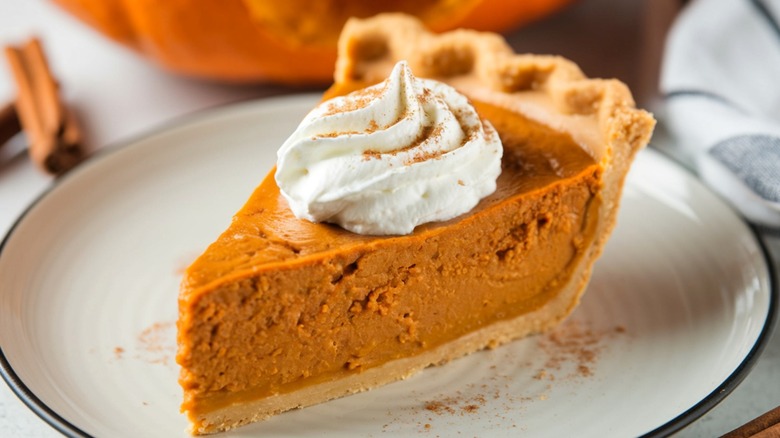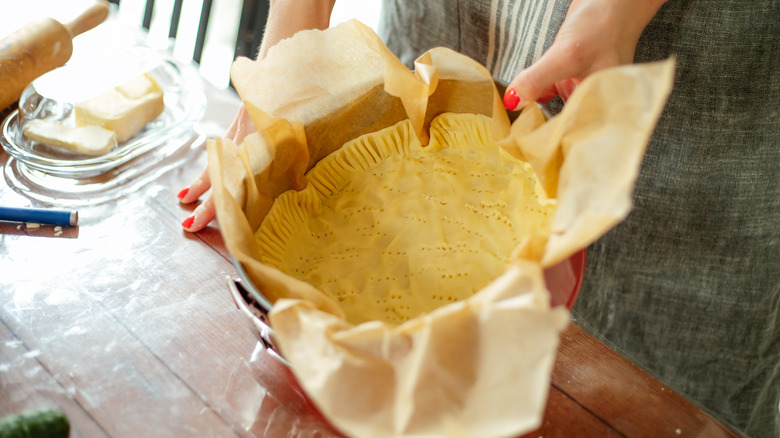The Small Mistake That Makes A Pumpkin Pie Instantly Gross
In my mind, a Thanksgiving spread isn't quite the same without a tempting pumpkin pie waiting to be devoured after all the turkey and Thanksgiving side dishes you can handle. But then again, I'm decidedly on team pumpkin pie. Others see the classic holiday dessert as a muddy blend of unappealing flavors which don't belong anywhere near the dining table. My theory is this hostility toward the iconic confection stems from many never having eaten a quality pumpkin pie. I would encourage all the naysayers out there to give it one more shot after following the advice of Odette D'Aniello, founder and CEO of Dragonfly Cakes. She recommends blind baking the crust first.
D'Aniello acknowledged this time-honored holiday treat doesn't always come out of the oven as tasty as it can be. "A bad pumpkin pie is easy to spot — it's either weeping (a soggy crust or watery top), rubbery (from overbaking), or just flat in flavor," she said. You can upgrade the flavor with a quick trip to your spice rack, but as far as the texture goes: "Blind baking is a little bit of insurance for your pie."
One reason getting the pastry right can be challenging is that the filling is runny compared to other, more forgiving pies. "Pumpkin pie filling is custardy and very wet, which means if your crust isn't partially baked before the filling goes in, you risk it turning to mush underneath," D'Aniello said. "By blind baking, you're giving the crust a head start so it stays crisp and holds its structure even after it's filled with something that resembles thickened soup going into the oven."
How to blind bake pie crust
Luckily, this extra step isn't hard and you don't necessarily have to make the crust from scratch to make use of it. As D'Aniello explained, "Blind baking works for both a homemade all-butter crust or a store-bought dough." Essentially, blind baking just means you're pre-baking the pie crust so it hardens a bit before the batter gets introduced. After about 15 minutes in the oven, it should take on a slightly golden hue, signaling it's ready for the filling.
D'Aniello added that blind baking isn't just good as a barrier to wet batter. In addition, "You won't be as tempted to leave it in 'just a little longer' to get the crust to brown." That's no small thing, as a few extra minutes can make the difference between a gross, beat-up looking pie and perfection on a plate. "The texture should be silky and custardy, not grainy or cracked down the middle," she said. "Overbaking is what leads to those dreaded cracks or a curdled, bouncy filling. A properly blind baked crust allows you to bake the filling just until it's set, while still getting that golden bottom." Add a bit of salted caramel on top of the pumpkin pie for some extra sweetness and I daresay many a pumpkin pie cynic will change their tune about this humble, classic confection.

